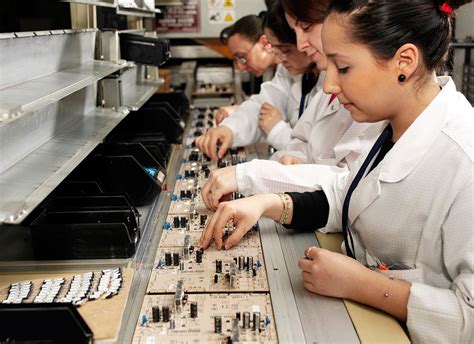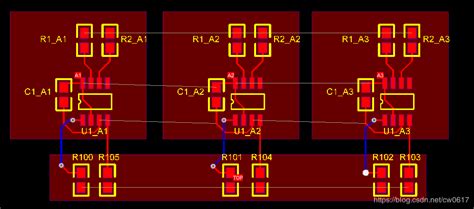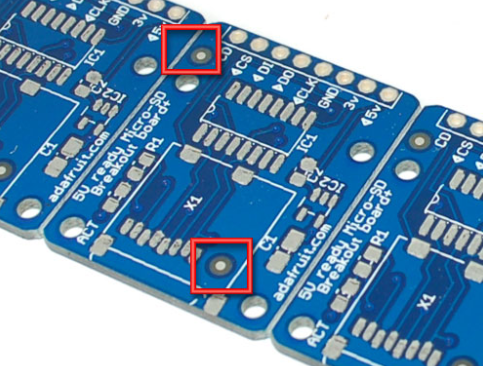Mastering Circuit Card Assembly Design for Innovative Solutions
Key Takeaways
Mastering circuit card assembly design is crucial for any professional in the electronics field. By understanding the fundamentals of pcb assembly, one can lay a solid foundation for creating efficient and effective designs. The importance of knowing the key components of any pcba cannot be overstated; each part plays a vital role in overall functionality. Therefore, familiarizing oneself with these elements enhances one’s design capabilities. Moreover, employing techniques for optimizing circuit card layouts is essential to maximize space and improve conductivity, which directly affects the performance of electronic applications. Utilizing innovative materials and cutting-edge technologies in circuit card assembly can further lead to significant advancements in productivity and durability. Additionally, adhering to best practices for streamlining production processes minimizes waste and reduces costs, making it critical for any production team. In the realm of electronics, troubleshooting common issues is an inevitable aspect of circuit card design that requires practical knowledge and experience. Real-world case studies demonstrate how successful applications of advanced circuit card assemblies have influenced various industries positively. As technology evolves rapidly, staying informed about future trends in circuit card assembly design can position professionals ahead of the curve, paving the way for innovation and enhanced functionality in modern electronic solutions.
Understanding the Basics of Circuit Card Assembly Design
Understanding the fundamentals of circuit card assembly (CCA) design is crucial for any professional involved in electronics. At its core, pcb assembly involves creating a physical arrangement of electronic components on a substrate. The substrate, usually made from materials like FR-4 or aluminum, serves as the foundation upon which the components are affixed. This process not only demands a thorough comprehension of electrical principles but also an intimate knowledge of design software and manufacturing processes.
One key aspect to consider in pcba design is signal integrity, which ensures that the electrical signals transmitted across the circuit card do not degrade or suffer interference. This can significantly affect performance and reliability. Additionally, managing thermal dissipation is vital since overheating can lead to component failure or reduced lifespan.
A well-structured table presenting some fundamental components and their roles in circuit card assembly can enhance understanding:
| Component | Role |
|---|---|
| Resistors | Limit current flow |
| Capacitors | Store and release energy |
| Inductors | Store energy in a magnetic field |
| Diodes | Allow current to flow in one direction |
| Transistors | Act as switches or amplifiers |
By mastering these basics, professionals can pave the way for successful designs that meet modern electronic demands. As technology progresses, staying updated with the latest techniques and materials will further enhance one’s capability to innovate within the realm of circuit card assembly design. Understanding how different components interact within a pcb assembly helps streamline designs, leading to more efficient manufacturing processes and ultimately higher-quality electronic products.
Key Components and Their Functions in Circuit Card Assembly
In any pcb assembly or pcba project, understanding the key components and their specific roles is crucial for achieving optimal functionality. The backbone of any circuit card assembly lies in several vital elements, including resistors, capacitors, inductors, and integrated circuits. Each of these components serves distinct functions; for instance, resistors limit current flow and help to manage voltage levels, while capacitors store electrical energy for short periods, enhancing the overall stability of the system. Furthermore, inductors play an essential role in filtering signals and managing electromagnetic interference. Integrated circuits streamline complex operations by combining multiple functions within a single chip, thus reducing overall space and providing more innovative design solutions in modern electronic applications. Additionally, connectors facilitate communication between different parts of the assembly, ensuring seamless data transfer. Understanding these components not only aids in troubleshooting potential issues but also provides foundational knowledge that empowers designers to create more efficient and advanced pcb assembly configurations. By mastering the intricacies of these key elements, professionals can develop innovative solutions that enhance performance and contribute to streamlined production processes in circuit card designs.
Techniques for Optimizing Circuit Card Layouts
When designing PCB assemblies (PCBA), optimizing the layout is crucial for enhancing performance and maintaining manufacturability. An effective layout not only minimizes potential issues but also ensures that the electronic components function harmoniously. Begin by considering the placement of components; key elements such as capacitors, resistors, and integrated circuits should be arranged to minimize signal path lengths and reduce electromagnetic interference. By leveraging tools like electronic design automation (EDA) software, designers can visualize and modify their circuit layouts with precision, which helps in preemptively identifying bottlenecks.
It is also advisable to maintain a balance between component density and thermal management. Compact designs can lead to overheating, necessitating strategic placement of thermal vias and heat sinks. This helps to dissipate heat effectively while ensuring that components remain within their operational limits. Additionally, using multilayer boards can organize complex circuits more efficiently by separating power, ground, and signal layers.
“A well-optimized PCB assembly layout is not just about fitting components together; it’s about creating a reliable pathway for electrical signals.”
Designers should also embrace routing techniques that minimize crosstalk by keeping high-speed signal traces short and ideally avoiding 90-degree angles for traces which could induce reflections. Overall, taking these considerations into account during the circuit card assembly design phase fosters not only improved functionality but also contributes to streamlined production processes, ultimately driving innovation in modern electronic applications.

Innovative Materials and Technologies in Circuit Card Assembly
In recent years, the field of circuit card assembly (CCA) has witnessed significant advancements due to innovative materials and emerging technologies. The integration of advanced polymers, flexible substrates, and high-density interconnects has revolutionized the design of printed circuit boards (PCBs), enhancing their overall performance. These materials not only improve the electrical properties but also contribute to weight reduction and increased durability, allowing for more compact designs that are essential in today’s electronic applications. Furthermore, the adoption of automated assembly techniques ensures higher precision in pcb assembly, minimizing human error while optimizing production efficiency. The utilization of technologies such as surface mount technology (SMT) enables more components to be placed on both sides of the board, consequently maximizing space and functionality. Additionally, innovations in 3D printing are paving new avenues for rapid prototyping and customization in pcba processes. These advancements collectively foster a new era of circuit card assembly design, where creativity meets technological capability, offering unprecedented solutions that cater to evolving market demands.
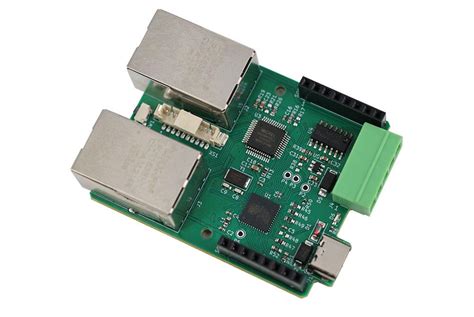
Best Practices for Streamlining Production Processes
Efficient production processes are critical for successful pcb assembly and overall effectiveness in circuit card assembly design. One of the primary best practices involves collaboration among various stakeholders, including design engineers, manufacturing teams, and supply chain professionals. Integrating their insights can lead to improved workflows and faster turnaround times. Another essential practice is to invest in automated tools that facilitate the assembly of printed circuit boards (PCBA) by minimizing manual intervention and reducing the potential for errors. Implementing design for manufacturability (DFM) principles ensures that the circuit card layout is optimized before production begins, thus avoiding costly adjustments later on. Additionally, leveraging real-time data analytics can provide valuable insights into production metrics, allowing teams to identify bottlenecks and make informed decisions swiftly. Continuous training and skill enhancement of personnel handling pcb assembly are also vital; keeping staff updated on the latest techniques and technologies can significantly improve overall efficiency. By adopting these best practices, organizations can ensure a streamlined approach to their circuit card assembly processes, ultimately leading to innovative solutions that meet today’s demanding technological standards.
Troubleshooting Common Issues in Circuit Card Design
When working with pcb assembly, various challenges can arise that may hinder the performance and reliability of the final product. One common issue is related to soldering defects, which can occur due to improper temperature settings or contaminated surfaces. These defects can lead to weak connections, resulting in pcba failures. Another significant concern is the arrangement of key components during the design phase. Poor placement can cause signal integrity problems, affecting the overall functionality of the circuit. Additionally, designers must be vigilant about crosstalk between adjacent traces, which can introduce noise and impact electronic performance. To address these concerns effectively, implementing regular design reviews and utilizing simulation tools during the circuit card assembly design phase are essential strategies. By proactively identifying potential pitfalls in circuit card design, engineers can streamline production processes and ensure a more robust and reliable final product that meets modern electronic application demands.
Case Studies: Successful Applications of Advanced Circuit Card Assemblies
In the burgeoning field of electronics, the effectiveness of pcb assembly processes can be clearly observed through various successful case studies. For instance, a renowned tech company implemented innovative pcba methodologies that integrated advanced materials and design techniques, significantly enhancing the performance and reliability of their products. One compelling example is their adoption of multi-layer circuit card assemblies that allowed for a compact design without sacrificing functionality. This approach not only minimized space requirements but also improved signal integrity by reducing signal loss, showcasing how strategic design choices can lead to superior outcomes. Furthermore, a medical device manufacturer utilized custom pcb assembly solutions that catered specifically to their rigorous standards for robustness and safety. By leveraging state-of-the-art manufacturing technologies and adhering to best practices in assembly processes, they were able to streamline production while ensuring compliance with industry regulations. These case studies illustrate how mastering the intricacies of circuit card assembly design can unlock innovative solutions that enhance both performance and efficiency in modern electronic applications. The insights gleaned from these examples underscore the importance of continual learning and adaptation in an ever-evolving technological landscape.
Future Trends in Circuit Card Assembly Design and Innovation
As the landscape of electronics continues to evolve, the pcb assembly industry is poised for significant advancements that will redefine pcba processes. One major trend is the integration of advanced automation technologies, which are streamlining production lines and enhancing efficiency. This embrace of automation not only reduces human error but also accelerates the manufacturing pace, allowing companies to bring products to market more rapidly. Additionally, there is a growing emphasis on sustainable practices in circuit card assembly design. Manufacturers are exploring eco-friendly materials that reduce environmental impact while maintaining high performance levels in circuit card assemblies.
Moreover, innovations in design software are enabling engineers to simulate and analyze circuit card layouts more effectively than ever before. This shift towards more sophisticated design tools facilitates rapid prototyping and testing, resulting in optimized layouts that enhance functionality. Another noteworthy development is the rise of flexible PCBs, which offer designers new possibilities for compact and lightweight electronic solutions. These types of assemblies are particularly beneficial for applications in wearable technology and mobile devices, where space is at a premium.
Finally, artificial intelligence-driven analytics are emerging as valuable assets in forecasting potential design issues and identifying production inefficiencies before they escalate into larger problems. By leveraging data insights, manufacturers can make informed decisions that enhance both product quality and production speed. Collectively, these trends signal a transformative era for circuit card assembly, driving innovation towards smarter and more efficient electronic solutions.

Conclusion
In summary, mastering circuit card assembly design is essential for the development of cutting-edge electronic devices. By understanding the fundamentals and components involved in pcb assembly, designers can create effective pcba solutions that are both functional and efficient. The incorporation of innovative materials and technologies not only enhances product reliability but also aligns with modern production demands. Best practices in layout optimization and production processes further streamline the manufacturing experience, leading to reduced costs and improved time-to-market. As the industry evolves, keeping abreast of future trends is crucial for maintaining a competitive edge in circuit card assembly design. Ultimately, a meticulous approach to design and production ensures that engineers can deliver robust solutions tailored to meet the growing demands of technology today.
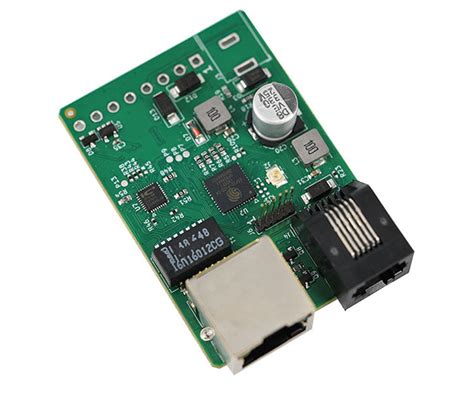
FAQs
What is PCB assembly and why is it important?
PCB assembly (PCBA) involves the process of soldering electronic components onto a printed circuit board to create functional electronic devices. It is essential as it ensures all components work together effectively, enhancing overall functionality.
What are the key components of circuit card assembly?
The main components in circuit card assembly include resistors, capacitors, integrated circuits, and connectors. Each plays a specific role in ensuring the circuit board operates efficiently.
How can I optimize my circuit card layouts?
To optimize your PCB assembly, consider layout strategies like minimizing trace lengths and strategically placing components to reduce interference. Utilizing software tools can also enhance layout efficiency.
What innovative materials are being used in PCB assemblies?
Innovations in material science, particularly with substrates like FR-4, flexible PCBs, and environmentally friendly solder options, are transforming circuit card assembly, allowing for improved performance and durability.
What are best practices for streamlining the production process?
Implementing automation in assembly lines, maintaining clear communication among teams, and adhering to a well-structured quality control process are best practices for effective production in pcb assembly.
How can I troubleshoot common issues in circuit card design?
Start by inspecting connections for solder quality, verifying component orientation, and ensuring that power levels meet specifications. Using diagnostic tools can significantly aid this process.


